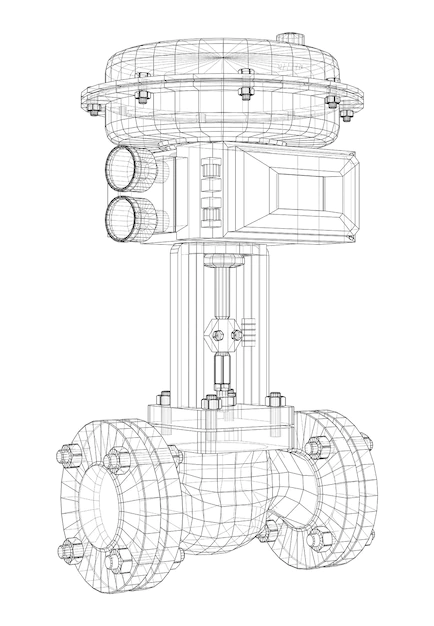Top 4 Ways to Leverage PIM for AI Voice Search
Voice assistants are no longer futuristic gadgets—they’re everyday shopping companions. From Alexa to ChatGPT Voice, consumers are using conversational AI to find, compare, and even...
Published: Sep 26, 2024 Updated: Nov 20, 2025
For decades, manufacturers relied on their network of suppliers to get products to market. However, things have now changed.
Developments in technology and changes in consumer behaviour due to Covid-19 lockdowns meant that traditional, B2B manufacturers could reach new audiences. Adopting a direct-to-consumer strategy – typically associated with B2C retailers and brands – became a real possibility.
Nevertheless, digital transformation for manufacturers doesn’t happen overnight. You need the right technology, investment, and support in place to reap the benefits of the D2C revolution.
In this blog, we look at how traditional B2B manufacturers should approach digital transformation to develop a dedicated D2C strategy. Learn how B2B manufacturers unlock new revenue streams and drive business growth.
Sure, implementing a digital transformation can present an obvious advantage. But, by going D2C, manufacturers will see growth in their profit margins. One reason is selling directly to customers means you’re able to sell at retail price, rather than wholesale.
In addition, adding new channels extends your reach, allowing you to access more customers you wouldn’t normally sell to. Take the example of a B2B manufacturer specializing in industrial cleaning products for hospitality. They primarily sell through traditional B2B channels such as distributors, dealers, and direct sales to businesses.

By establishing an eCommerce platform, the cleaning manufacturer sells their products directly to end consumers. This includes small business owners, contractors, and homeowners. The manufacturer diversifies their customer base and improves customer experiences, captures new market opportunities, and develops brand awareness.
Expanding your product range is straightforward, too. Once a product is ready to go to market, the process of launching it to your eCommerce store is seamless.
Remember the days of trawling through product catalogs and bookmarking the products you wanted to order? For buyers, this is often the reality of their day-to-day dealings with manufacturers. Not anymore!
Manufacturers selling via digital D2C channels – such as a modern eCommerce platform or marketplaces – have more options to customize the customer journey. This is because the best modern manufacturing digital technologies feature:
Ultimately, a seamless transaction coupled with a personalized experience will create lasting relationships with customers. Digital transformation in manufacturing means end-users will enjoy shopping with you and keep coming back for more!

In some cases, manufacturer products are emailed (or even faxed!) and manually sent by manufacturing leaders to the supply chain. These old-school business models aren’t up to scratch. Not only that, but they’re really slow, too!
By opening a D2C channel, you equip yourself with a direct and shorter route to market. In other words, breaking away from the traditional supply chain means manufacturers have fewer messy lines of communication to juggle.
In addition, eCommerce platforms provide manufacturing processes with autonomy and flexibility in the decision-making process. With fewer layers of decision-making and shorter approval times, traditional B2B manufacturers launch new products more quickly. With digital transformation for manufacturing businsesses, complex procurement processes and contract negotiations are a thing of the past.
Before undergoing the lengthy process of trialling eCommerce platforms and other digital transformation solutions for the manufacturing industry, it’s important to develop a solid digital transformation strategy.
Yes – there are clear benefits for manufacturers by going D2C to enable transformation in manufacturing. However, it isn’t for everyone. Digital transformation requires dedicated investment in technology and commitment throughout the business. It’s best to think of the digital transformation process as a marathon, not a sprint.
In addition, you need to make sure your technology suits your team, C-suite executives, and – most importantly – the end user. Understand the barriers of digital transformation for manufacturers before realizing if it’s a worthwhile process for your business.
Not every B2B manufacturing business will have the right product. It’s important to take an honest look at your products before diving in.

Are you a B2B manufacturer specializing in producing industrial-grade turbine blades used in aircraft engines? This sector requires specialized knowledge, advanced technology, and strict quality control measures. In this context, D2C sales wouldn’t be appropriate
Do you make gym equipment – such as resistance bands and dumbbells – and typically wholesale your products to local gyms? Selling excess stock via a D2C channel to tap into the popularity of home workouts would work perfectly.
Understanding are focus areas for digital transformation in industrial manufacturing helps create a successful digital transformation strategy that puts customers at its core.
Remember, in this day and age, customers want a sophisticated, user-friendly buyer experience, with short delivery times. Modern consumers expect to purchase products from your store as quickly and efficiently as possible. You have to prioritize this in your digital transformation strategy.
From a customer service point of view, D2C shoppers have different demands. For instance, consider your post-purchase support carefully. So, if a customer wants to return a product, you need to establish the infrastructure to make the process as smooth as possible.
With a typical B2B sales cycle, you might offer long-account management and contracts. With a D2C sales model, you should choose to implement digital loyalty programs and source feedback through customer surveys.
One of the most revolutionary manufacturing technologies of the past several years is 3D printing, which has already been employed by other industries to create innovative new items and helps in developing digital transformation strategies for manufacturing.

Using digital data, items can be created through the process of 3D printing. Layers of material are applied with lasers and then hardened to form the object. One can utilize the technology to create objects in their whole or just the component pieces to reduce cost.
A technique called predictive maintenance aids producers in keeping an eye out for wear indicators in machinery and other equipment, to provide a digital transformation roadmap for manufacturing. Additionally, artificial intelligence AI can assist in determining whether anything needs to be fixed when it breaks down or when parts need to be replaced.
Because it stops issues before they start, it is comparable to preventative maintenance in this regard. Predictive maintenance on work order software, however, also offers information that can lower downtime and boost operational effectiveness.
Both methods to ensure digital transformation for manufacturing companies have been applied in the industrial sector to help companies streamline operations and boost productivity. For instance, a business might utilize augmented reality to show assembly instructions to staff members on their displays or to model their manufacturing line in virtual space so they can see what the final product might appear like before starting production.

Conventional computers can store large amounts of data, but sharing is limited by their physical design. Adopting a digital strategy to optimize digital transformation for manufacturers creates avenues for data visibility and almost infinite cloud computing storage capacity.
The wider plant floor workforce can make better decisions and work together more successfully to achieve a shared goal of production performance when data is made both visible and accessible in real-time. Everyone benefits when production succeeds, after all. Although data visibility may seem like a little step, it can result in less labor being done twice, more accurate data, and the ability to spot areas for development that would have a positive financial impact.
A company’s reliance on physical constraints is decreased by adopting a digital mindset. A relevant illustration of how digital transformation enables increased flexibility is software that is provided as a service.
Software offerings used to be restricted to specific business sizes or types. Software that is available on demand did not allow for sufficient growth or updates. On the other hand, cloud-based software provides digital transformation for manufacturing by a more personalized experience. Usually, products are offered as subscription services that can change depending on the company’s interests or growth.
It’s important to determine the architecture of your D2C manufacturing software. The common binary is between a monolithic approach and a headless system. Let’s have a look at how the two digital technologies stack up:
| Pros | Cons | |
| Monolithic platforms |
|
|
| Headless architecture |
|
|
Below are examples of eCommerce platforms Pimberly manufacturer customers use. Below, find a selection of monolithic and headless solutions:
Marketplaces such as Amazon, eBay, or ManoMano are great places to sell excess stock by tapping into their huge ready-made audiences.
In fact, if you don’t sell products through marketplaces, you’re missing out on 63% of customers who start their product searches on marketplaces.
In addition, marketplaces like Amazon and eBay come with native marketing tools to create an online storefront in line with your branding. We have extensive guides for both platforms, too!
Digital marketing is key to D2C success. Manufacturers should leverage essential marketing tools to drive brand awareness and capture new audiences.
Let’s look at an example of digital transformation in the automotive industry. The company specialize in producing engine parts and suspension systems. Their D2C target audience includes hobbyists and DIY enthusiasts, vehicle owners in need of replacement parts, and small workshops. Here’s how they use digital marketing to grow their D2C channel:
This is in the form of a user-friendly website to showcase their product catalog. The website also includes installation guides and videos.
In addition, they set up a Google Business profile with key contact information. From here, they also encourage customers to leave reviews to develop trust with potential customers.
Because their audience is active on Facebook, they set up a Facebook page to showcase and sell their products directly via Facebook Shops.
Remember: digital transformation in construction will be different to the automotive sector. There might be some overlap, but it’s important to really drill down into your target audience’s behaviour.
They use online advertising – such as Google Ads – to reach potential customers. Compelling ad copy coupled with high-quality images drives traffic to their website.
The automotive manufacturer contacts automotive bloggers and YouTubers with large followings to demo their products and share their experiences. This doesn’t just have to be high-end fashion brands!
The work doesn’t stop here. As your D2C arm continues to grow, it’s important to adapt to market changes. To do this, continuously gather feedback from consumers and track customer satisfaction through social media and customer reviews.
Key metrics to track include website traffic, conversion rates, average order value, customer acquisition cost, and customer retention rate. Regularly reviewing these metrics will give you insight into what’s working – and what isn’t! For a comprehensive breakdown of eCommerce KPIs for your business, access the whitepaper here.
From increased brand awareness, and improved customer relationships, to increased profits. B2B manufacturers with a strong D2C sales arm will reap rewards
However, Rome wasn’t built in a day. B2B manufacturers need both feet in the future to successfully operate a D2C model in tandem with their B2B sales channel. Juggling the two is near impossible without the right infrastructure and focused approach.
Digital transformation for manufacturers is a process requiring business change and digitization to unlock growth opportunities. In the long term, the benefits of digital transformation to develop a D2C approach will transform your business for the better.


